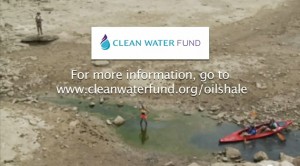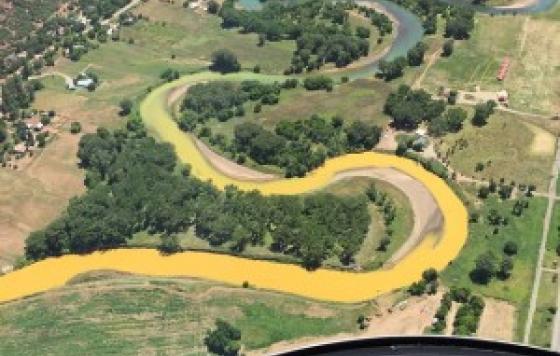
By Gary Wockner, Colorado Program Director
After a summer of record drought in Colorado, some politicians and industry executives continue to push oil shale speculation in spite of its potentially disastrous effect on the state’s water supply. No one knows just how much water oil shale companies would use or pollute, but this summer’s drought proves that oil shale poses an unacceptable risk to Colorado families and businesses that depend on the state’s rivers.
The referenced media source is missing and needs to be re-embedded.
The Interior Department is expected to make a decision this fall on how oil shale research and development will be managed on Colorado’s public lands.
In an effort to raise awareness with westerners, Clean Water Fund recently launched an ad campaign talking about how oil shale could drain our water away.
The amount of water required to produce oil from oil shale could be staggering. Commercial oil shale development might require as much as 123 billion gallons of water each year, enough water for more than 750,000 households.
Oil shale isn’t even oil. It’s a rock that must be melted by heating it to at least 700 degrees for months or even years to be processed into oil. As you can imagine, this process could require huge new demands on energy and water.
Because no oil company has discovered the right technology to make commercially viable oil shale development possible, no one knows just how much water would be required. What we do know is that after a century of research, all oil companies have to show for their effort is failure and polluted water.
Oil shale mining and processing can leach toxic metals and pollutants including selenium, cadmium, and arsenic into the water supply. In fact, when Unocal’s Anvil Points research operation near Rifle, Colorado was abandoned in 1984, it was discovered that the operation had polluted water with arsenic for nearly 30 years before serious clean-up efforts were conducted.
Now in 2012, the severe drought has stretched water supplies thin for cities and farms, and our rivers across the state are flowing so low that fish populations are severely impacted and the recreational economy has been drained away. We need to know the exact risks oil shale poses on our water supply and the health of our rivers. Oil shale companies have already secured more than 200 water rights and 100 irrigation ditches in Colorado. If those rights were ever used for oil shale mining and processing, it would strain already overburdened water and river resources.
Clean Water Fund’s ad campaign intended to demonstrate just what Colorado families could face unless BLM adopts a smart approach to oil shale.
Be sure to check out our online video featuring a fisherman on a riverbank, two kayakers, and a young girl with goggles ready to enjoy a river, not realizing it has run dry. The West needs a smart approach to this issue, including a full study of oil shale impacts to water quality and quantity.
Interior Department Secretary Ken Salazar understands this issue well and has an opportunity to make a lasting impact for the West and our rivers and water – let’s make sure he does it.Related Posts
Stay Informed
Get the latest updates and actions:
Thanks for signing up!
There was a problem processing your signup. Please try again.


